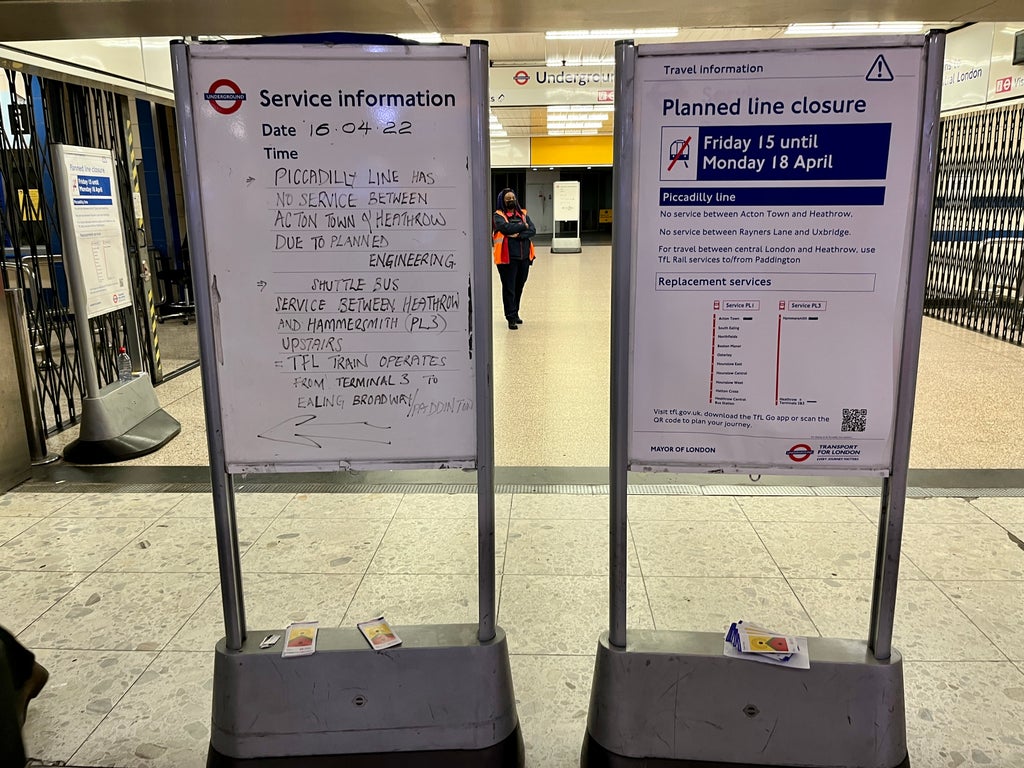
The hundreds of waiting (and in many cases panicking) passengers may not have appreciated it, but on Sunday Thameslink brought about a rail miracle at London St Pancras.
In a touching 2022 reimagining of the Easter story, the previously dead and buried 11.35am from London St Pancras to Luton Airport Parkway and Bedford was brought back to life.
The risen train was one of dozens that was disrupted by a points failure at Stoat’s Nest Junction – a poetically named location on the main line from Brighton and Gatwick to London, halfway between Coulsdon and Purley.
Some of the trains that were due to run through the capital to pick up Luton airport passengers delayed by 90 minutes, while others – including the 11.35am – were simply cancelled.
People who had allowed plenty of time to reach the Bedfordshire airport were left in the dark, watching the minutes tick away, until suddenly a train claiming to be the 11.35am showed up – ostensibly on time.
Thameslink tells me “the service was reinstated at short notice” but grumpy and stressed passengers suspected that some hopelessly late-running train had been deftly rebranded as the 11.35am in order to give the appearance of at least one service being on time.
Stuff happens on the creaking British railway infrastructure, which is one reason Network Rail closes significant parts of the system for planned engineering work.
Some disruption is announced months in advance (such as the closure of London Euston station for the entire Easter long weekend), while others, like the failure at the errant junction, is totally unexpected.
On-the-day disruption must be managed as smartly as possible to get people where they need to be. But at St Pancras, Thameslink chose not to bother.
St Pancras happens to offer a miraculously quick way to reach Luton Airport Parkway, with nonstop East Midlands trains at least hourly, taking just 22 minutes. That would have been a swift and painless solution for many of the passengers. When I asked a member of platform staff why they had not announced the possibility, the response was “because it’s a different company”.
A Sunday morning shambles is one thing. But when a closure is planned months ahead, there is no excuse for a shambolic response.
Over at Heathrow airport, a different kind of Easter reimagining was taking place: a remake of the entertaining TV programme Total Wipeout (or, for older readers, It’s a Knockout). In both, contestants are given some nigh-impossible challenge of strength, dexterity and timing that inevitably defeats most of them.
It was bold of Transport for London (TfL) to choose to close the western end of the Piccadilly line of the capital’s Underground right through the Easter weekend, when hundreds of thousands of airline passengers would be flying through Heathrow and hoping to use Tube trains. TfL laid on buses instead.
Yet rather than lining the vehicle up outside each of the three active terminals, the organisation chose not to make any mention of the closure until arriving passengers reached the Tube station. In the case of Heathrow Central (serving Terminals 2 and 3) a handwritten sign directed them to the bus station.
Here, another sign instructed them to go to stop 17 – but when they reached this location, they discovered that the replacement buses were even further away, across a road. It was confusing enough for a person who has been to Heathrow a million times, has English as a first language and no cumbersome baggage. New arrivals with children and luggage in tow were boggled.
A TfL spokesperson told me: “Replacement bus services operated from the Central Bus Station due to its proximity to the London Underground station which is located directly below the bus station
“In addition to directional signage TfL deployed customer information staff between the London Underground station and the bus stops to proactively assist customers with directions.”
An understandable response from passengers caught up in either fiasco may be to steer clear of all airport trains, underground or overground, in future – and instead add to road congestion. The temporary “Great British Rail Sale” offers a welcome respite from some high fares. But the first priority for public transport: get the basics right.







